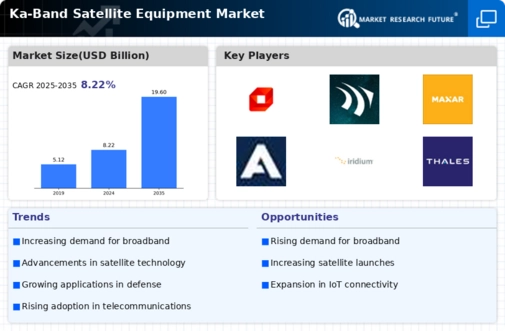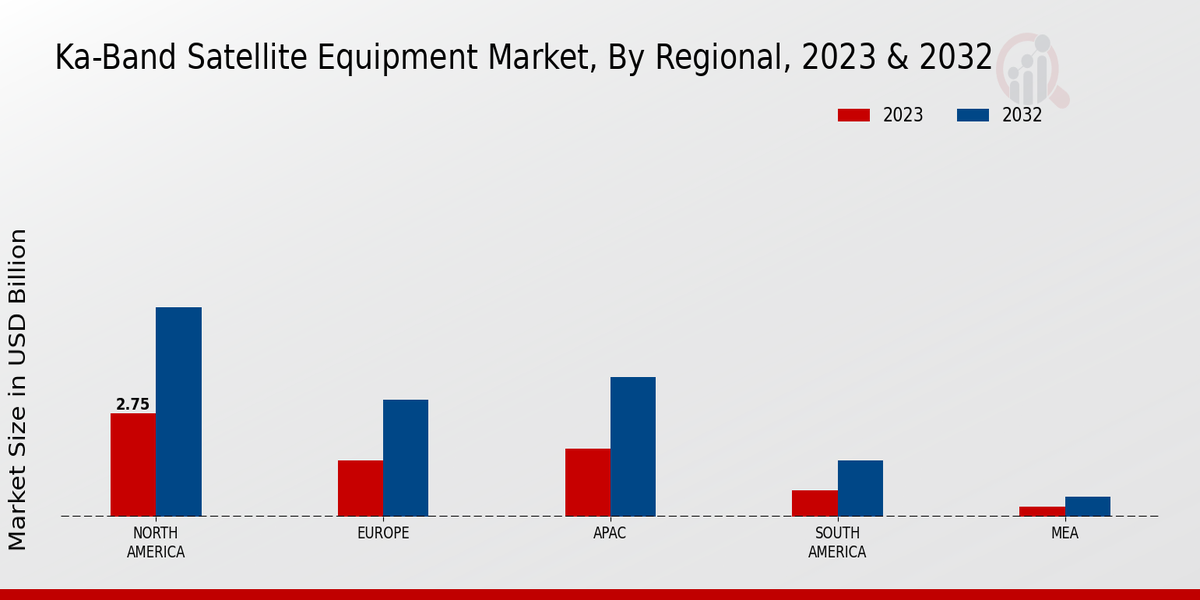The Ka-Band Satellite Equipment Market has become increasingly competitive as demand for high-speed data communication and advanced satellite services rises across various sectors, including telecommunications, defense, and broadband connectivity. With the proliferation of satellite technology and the increasing need for reliable and efficient communication channels, companies operating in this market are continually innovating and expanding their service offerings. The competition is characterized by several key dynamics, including technological advancements, pricing strategies, service diversifications, and the ability to forge strategic partnerships.
Companies within this market strive to differentiate themselves by leveraging their technological expertise and addressing the diverse needs of their customer bases while navigating regulatory landscapes and international market challenges.AVANTI Communications Group stands out in the Ka-Band Satellite Equipment Market due to its strong focus on delivering high-quality satellite communication solutions tailored to the needs of its clients. The company has built a robust market presence by prioritizing customer satisfaction and consistently providing reliable services in various environments.
AVANTI's strategic investments in cutting-edge technologies and infrastructure enable it to enhance bandwidth availability and reduce latency, thus catering to the growing demand for seamless connectivity. The company’s flexibility in customizing its offerings allows it to serve a wide range of industries, from enterprise and government to maritime and aviation. This adaptability, combined with a commitment to operational excellence, has fortified AVANTI Communications Group's position as a leader in the Ka-Band satellite sector.
Telesat has established itself as a formidable player in the Ka-Band Satellite Equipment Market, distinguished by its extensive satellite network and experience in providing high-performance communication services globally.
Telesat's strengths emerge from its innovative satellite technology that offers high-capacity connectivity, particularly for remote and underserved regions. The company has effectively capitalized on the growing trend of digital transformation, providing essential services that support the needs of various sectors, including media, telecommunications, and government applications. Telesat's focus on building strategic alliances and enhancing its satellite capabilities has empowered it to remain competitive while simultaneously addressing the increasing bandwidth demands of its customers. This strategic positioning enables Telesat to maintain a strong foothold and to be recognized as a reliable solution provider within the Ka-Band satellite equipment landscape.

















Leave a Comment